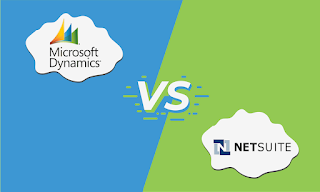The Ultimate Guide to QuickBooks Data Integration
At Satva Solutions, we recognize the pivotal role that QuickBooks plays in financial management for businesses worldwide. In an era where efficiency and accuracy are paramount, integrating your business data with QuickBooks is not just an option—it's a necessity. This guide aims to provide a thorough understanding of how custom QuickBooks integration can streamline your business operations, ensuring that your financial data works seamlessly with other crucial business systems.
Understanding QuickBooks Data Integration
Data integration involves combining data residing in different sources and providing users with a unified view of these data. When it comes to QuickBooks, integration typically involves syncing this powerful accounting software with other business systems such as CRM, eCommerce platforms, or payroll services. The benefits are numerous, including reduced manual data entry, minimized errors, and a clearer overview of your financial status.
Key API Integration Technologies
Integration with QuickBooks can be achieved via several technologies, the most prominent being the use of APIs (Application Programming Interfaces). QuickBooks offers a robust Online API and a Desktop SDK that allow for extensive customization and control over your data integration processes. Some of the custom api integration company like Satva Solutions will do custom quickbook integration.
Step-by-Step Guide to QuickBooks Integration
1. Assessing Your Needs
Before diving into integration, it's crucial to understand what data needs to be integrated and how often. For instance, a business might need real-time integration for sales data but can afford to sync inventory data once a day.
2. Choosing the Right Tools
Choosing between direct API integration and third-party tools depends on several factors, including budget, technical expertise, and specific business needs. Direct API integration offers more control and customization.
3. Implementation Process
Implementing QuickBooks integration involves:
Setting up the integration environment.
Mapping data fields between QuickBooks and other applensures that all information is synchronized correctlyhronized.
Conducting thorough tests to verify that the data flows accurately and consistently without issues.
4. Maintenance and Troubleshooting
Once integration is live, regular monitoring is essential to ensure everything runs smoothly. This involves checking for and resolving data mismatches, duplication, or transfer errors.
Case Study: QuickBooks Online Integration with Full Commerce Service Platform
Best Practices for QuickBooks Integration
Ensuring data security is paramount, especially when financial data is involved. Regularly updating integration tools and training staff on new processes can help maintain the integrity and security of your data systems.
Future Trends in QuickBooks Integration
The future of QuickBooks integration lies in smarter, more predictive systems enabled by AI and machine learning. These technologies could further automate data processes, predict financial trends, and provide deeper insights into business operations.
Conclusion
Integrating your business systems with QuickBooks can significantly enhance operational efficiency and financial management. Satva Solutions is dedicated to helping businesses achieve seamless integration, empowering them to focus more on growth and less on manual data management.
Additional Resources
For more information on QuickBooks APIs, Custom QuickBooks integration, and community support, visit our website or contact our tech support team. Let us help you make the most of your QuickBooks integration today.



Comments
Post a Comment